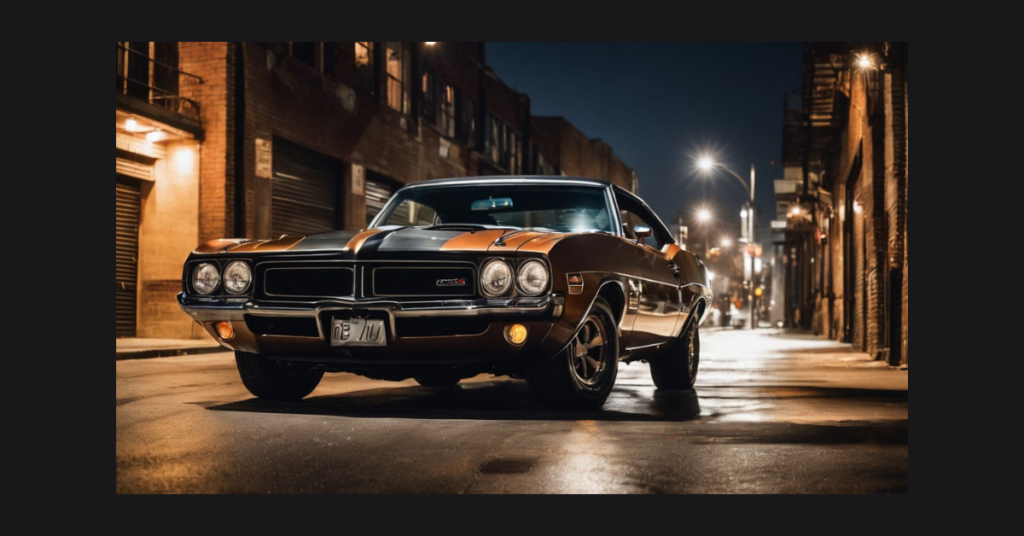American muscle cars are not just vehicles; they are icons of power, speed, and raw automotive passion. Defined by their robust engines, aggressive styling, and thunderous exhaust notes, these cars have left an indelible mark on automotive history and continue to captivate enthusiasts worldwide. This article delves deep into the rich heritage of American muscle cars, tracing their evolution, exploring the iconic models that shaped the genre, and examining their enduring appeal in the modern automotive landscape.
Origins and Evolution
The Birth of a Legend
The term “muscle car” emerged in the 1960s, a period characterized by a burgeoning interest in high-performance automobiles among American automakers and consumers alike. The genesis can be traced back to the Pontiac GTO, introduced in 1964, which is often credited as the first true muscle car. Powered by a potent V8 engine and boasting aggressive styling, the GTO set the stage for a new era of performance-oriented vehicles.
Golden Age of Muscle Cars
The late 1960s and early 1970s marked the golden age of American muscle cars. Automakers such as Ford, Chevrolet, Dodge, and Plymouth competed fiercely to produce the most powerful and visually striking models. Legendary names like the Ford Mustang, Chevrolet Camaro, Dodge Charger, Plymouth Road Runner, and Pontiac Firebird Trans Am became household icons, revered for their brute force and exhilarating driving experiences.
Performance Innovations
During this era, technological advancements in engine design, such as the development of big-block and small-block V8 engines, revolutionized the performance capabilities of muscle cars. Innovations in suspension, braking systems, and aerodynamics also contributed to their prowess on both the street and the racetrack. Muscle cars quickly became symbols of American engineering ingenuity and automotive excellence.
Iconic Models and Performance Legends
Ford Mustang
The Ford Mustang, introduced in 1964, is perhaps the most iconic muscle car of all time. It pioneered the “pony car” segment and offered a range of powerful engine options, including the legendary 428 Cobra Jet. The Mustang’s timeless design and customizable options have ensured its enduring popularity across generations.
Chevrolet Camaro
Chevrolet’s response to the Mustang, the Camaro, made its debut in 1966 and quickly established itself as a formidable competitor. With its aggressive styling and potent engine lineup, including the legendary SS and Z/28 variants, the Camaro became a symbol of American performance prowess on both the street and the track.
Dodge Charger
The Dodge Charger, introduced in 1966, epitomized the marriage of style and power. Known for its distinctive fastback design and muscular stance, the Charger gained fame through its appearance in movies and television, solidifying its status as an enduring cultural icon. Models like the Charger R/T and Charger Daytona are celebrated for their performance heritage.
Plymouth Road Runner
The Plymouth Road Runner, introduced in 1968, embodied a no-frills approach to performance. Named after the famous Warner Bros. cartoon character, the Road Runner offered exceptional horsepower-to-dollar value, making it accessible to a wide audience of enthusiasts. Its bold styling and powerful engine options, such as the Hemi V8, made it a favorite among drag racers and street racers alike.
Cultural Impact and Popularity
Muscle Cars in Pop Culture
American muscle cars have permeated popular culture, appearing in countless movies, TV shows, and music videos. From Steve McQueen’s iconic chase scene in the Ford Mustang GT in “Bullitt” to the menacing presence of the Dodge Charger in “The Dukes of Hazzard,” these cars have become synonymous with adrenaline-pumping action and cinematic thrills.
Collector’s Market and Enthusiast Community
The enduring popularity of muscle cars is reflected in the vibrant collector’s market and enthusiast community. Classic models from the golden age regularly fetch high prices at auctions, driven by nostalgia and appreciation for their timeless design and performance heritage. Enthusiast clubs, car shows, and online forums provide platforms for fans to share their passion, exchange knowledge, and showcase their prized vehicles.
Modern Revival and Evolution
While the heyday of traditional muscle cars may have passed, the spirit of American muscle lives on in modern iterations and reinterpretations. Automakers continue to produce high-performance variants of iconic models like the Ford Mustang GT, Chevrolet Camaro SS, and Dodge Challenger SRT Hellcat, equipped with advanced technologies that enhance both power and efficiency.
Technical Innovations and Performance Enhancements
Engine Technology
Modern muscle cars benefit from advancements in engine technology, including turbocharging, direct fuel injection, and variable valve timing. These technologies improve power output, fuel efficiency, and emissions performance without compromising on the visceral driving experience that defines muscle cars.
Handling and Dynamics
Suspension tuning, electronic stability control systems, and performance-oriented tires have transformed the handling characteristics of modern muscle cars. Drivers can enjoy enhanced agility and cornering capabilities while maintaining the straight-line speed and acceleration that are hallmarks of the genre.
Driver Assistance and Connectivity
Incorporation of driver assistance features such as adaptive cruise control, lane-keeping assist, and smartphone integration has made modern muscle cars more accessible and user-friendly. These technologies appeal to a broader range of consumers seeking both performance and everyday practicality.
Environmental Considerations and Sustainability
Efficiency Improvements
In response to evolving environmental regulations and consumer expectations, automakers are focusing on improving the fuel efficiency and emissions performance of muscle cars. Hybrid and electric powertrain options are being explored to reduce environmental impact while preserving the thrilling performance characteristics that enthusiasts crave.
Sustainability Initiatives
Automakers are also implementing sustainable manufacturing practices and using recycled materials in vehicle production to minimize environmental footprint. By embracing sustainability, muscle car manufacturers aim to balance performance with responsible stewardship of natural resources.
Future Outlook and Emerging Trends
Electric and Hybrid Muscle Cars
The future of American muscle cars may include electric and hybrid variants that leverage electric motors and advanced battery technology to deliver instant torque and exhilarating acceleration. These vehicles are poised to redefine performance standards while addressing environmental concerns and regulatory requirements.
Autonomous Driving and Connectivity
Integration of autonomous driving technologies and enhanced connectivity features will continue to shape the evolution of muscle cars. These innovations promise to enhance safety, convenience, and entertainment options for drivers and passengers, while preserving the thrill of driving that defines the muscle car experience.
Global Market Expansion
American muscle cars have gained popularity in international markets, with automakers exploring opportunities to expand their presence globally. Strategic marketing initiatives and localized adaptations may further fuel demand for these iconic vehicles among enthusiasts worldwide.
Conclusion
American muscle cars represent more than just vehicles; they embody a legacy of innovation, passion, and exhilarating performance that has captivated automotive enthusiasts for decades. From their origins in the 1960s to their enduring popularity in the modern era, muscle cars have evolved while staying true to their core values of power, speed, and unmistakable style. As the automotive industry continues to innovate and adapt to changing consumer preferences and regulatory landscapes, muscle cars are poised to remain a timeless symbol of American automotive excellence.







